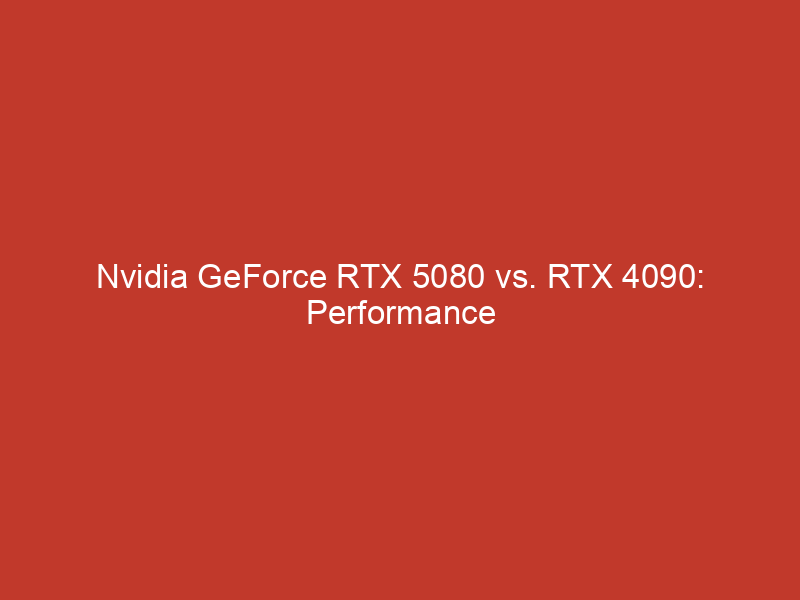Nvidia has recently removed the embargo on its GeForce RTX 5080 graphics card, allowing us to evaluate its gaming performance compared to the well-regarded RTX 4090, the RTX 4080 Super, and AMD’s Radeon RX 7900 XTX. This review follows the unveiling of the RTX 5090, which, priced at a staggering $2,000, boasts exceptional performance that caters to those with deep pockets.
The RTX 5080, however, comes in at a more manageable price of $1,000, although its actual market price may fluctuate until late February due to availability issues. With AMD’s Radeon RX 9070 XT unlikely to pose a serious threat to Nvidia’s top-tier cards, the prices for the RTX 5080 may remain elevated.
Specifications of the RTX 5080
The RTX 50-series introduces impressive specifications, notably highlighting the substantial difference in power between the RTX 5080 and its more expensive counterpart, the RTX 5090. The latter features double the memory, more than double the CUDA cores, and a memory bus that is twice as wide. Such enhancements justify the higher price tag, translating into remarkable performance gains.
Understanding DLSS 4 and Multi Frame Generation
Among the key advancements in the RTX 50-series is the introduction of DLSS 4 and Multi Frame Generation. The latest Transformer model used in DLSS upscaling enhances image quality significantly. Notably, while the RTX 50-series includes more robust hardware to handle these DLSS features, DLSS 4 remains backward compatible with earlier models.
However, it’s important to note that not all features are universally compatible across all RTX-capable graphics cards. Frame Generation is exclusive to the RTX 40 and 50 series, while Multi Frame Generation is limited to the 50 series. Initially, Frame Generation added one artificially generated frame between two rendered frames, resulting in improved frame rates. With the RTX 50-series, this capability has been enhanced, allowing for multiple artificially generated frames to significantly boost average frame rates from 60 fps to over 200 fps.
Testing the RTX 5080
The testing setup for the RTX 5080 included the latest drivers, game updates, and Windows updates, powered by an AMD Ryzen 7 9800X3D and 32GB of DDR5 6000 memory. All games were tested at 4K resolution, with DLSS and Frame Generation toggled on and off to assess performance across various scenarios.
Performance Overview
For those interested in a quick snapshot of the RTX 5080’s performance, I compiled average frame rates across all tested games, both with and without Multi Frame Generation. The results vary depending on the titles evaluated. For detailed insights, I recommend checking resources like TechPowerUp and Hardware Unboxed, which provide comprehensive performance analyses across a wide range of games.
In terms of raw performance, without Multi Frame Generation, the RTX 4090 outpaces the RTX 5080 by approximately 20%, while the RTX 5090 leads by nearly 50%. The RTX 4080 Super and AMD Radeon RX 7900 XTX trail behind by 10% and 22%, respectively, with the RX 7900 XT lagging even further at 34% slower than the RTX 5080.
When Multi Frame Generation is enabled in certain game tests, the RTX 5080 narrowly surpasses the RTX 4090 by 1%, mainly because the RTX 4090 lacks support for this feature. Increasing the number of Multi Frame Generation titles would likely boost this performance differential, aligning more closely with Nvidia’s promotional claims. The RTX 5090 maintains its lead, albeit with only a slight margin.
Gaming Benchmarks
The gaming benchmarks reveal a complex landscape of performance metrics. Overall, the RTX 4090 remains the superior card when Multi Frame Generation is disregarded, providing a 20% performance advantage over the RTX 5080. The difference narrows to just 10% when compared to the RTX 4080 Super, highlighting the need for consumers to consider their gaming preferences when making decisions.
As prices stabilize, the demand for both the RTX 5080 and 5090, combined with the lack of competitive offerings from AMD, may lead to higher market prices than initially indicated. This scenario could keep older RTX 40-series cards’ values relatively stable. The pricing dynamics will be crucial, especially if the RTX 4080 Super sees reductions in its price point.
For gamers who prioritize DLSS 4 and Multi Frame Generation, the RTX 5080 represents a compelling option, sitting just below the RTX 5090 in terms of performance. While $1,000 is still a significant investment for a graphics card, the growing library of 75 titles supporting these features enhances its appeal. However, if Multi Frame Generation isn’t a priority for your gaming needs, the RTX 5080 may not warrant an upgrade from older models like the RTX 4080 or RTX 4080 Super.



